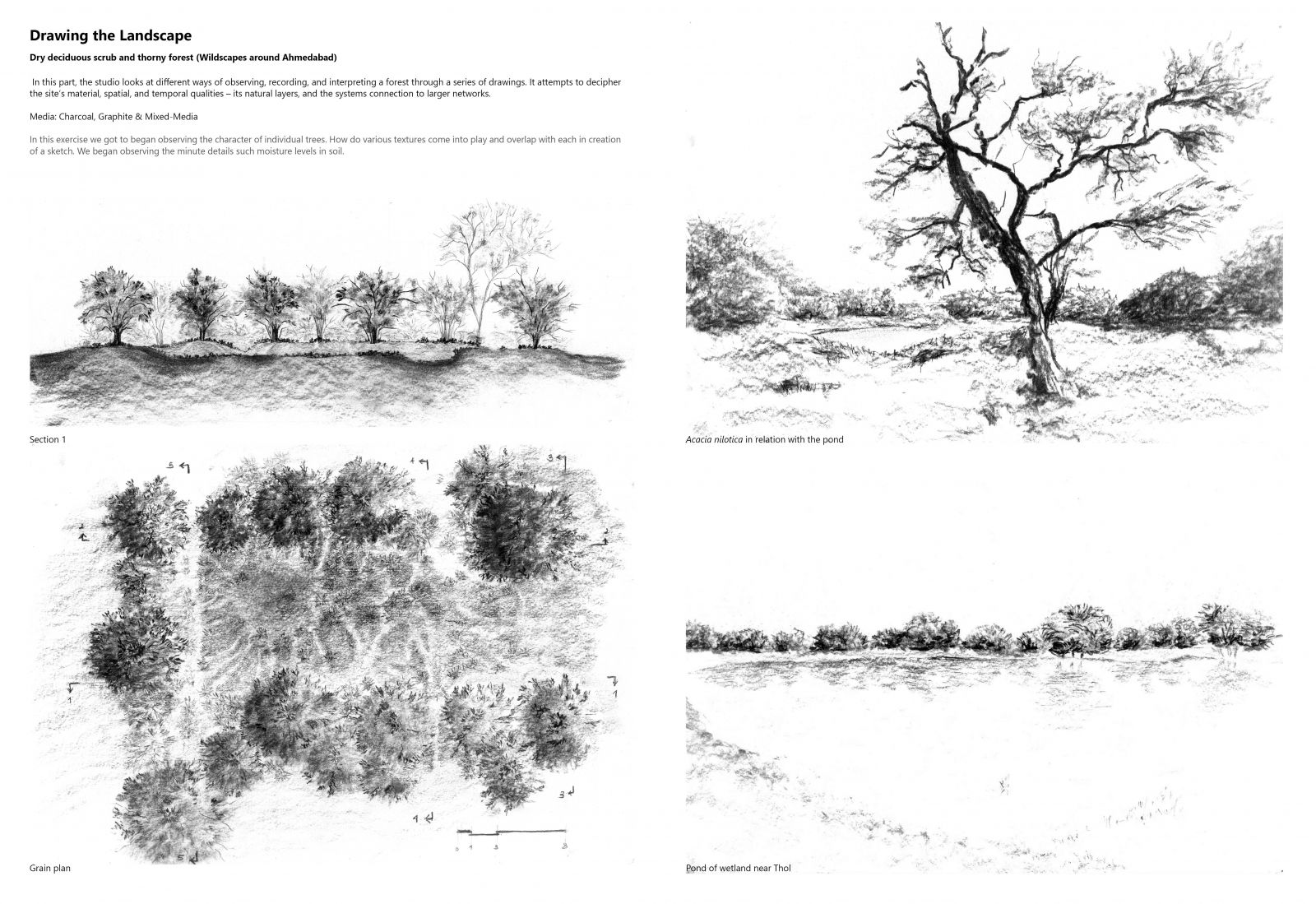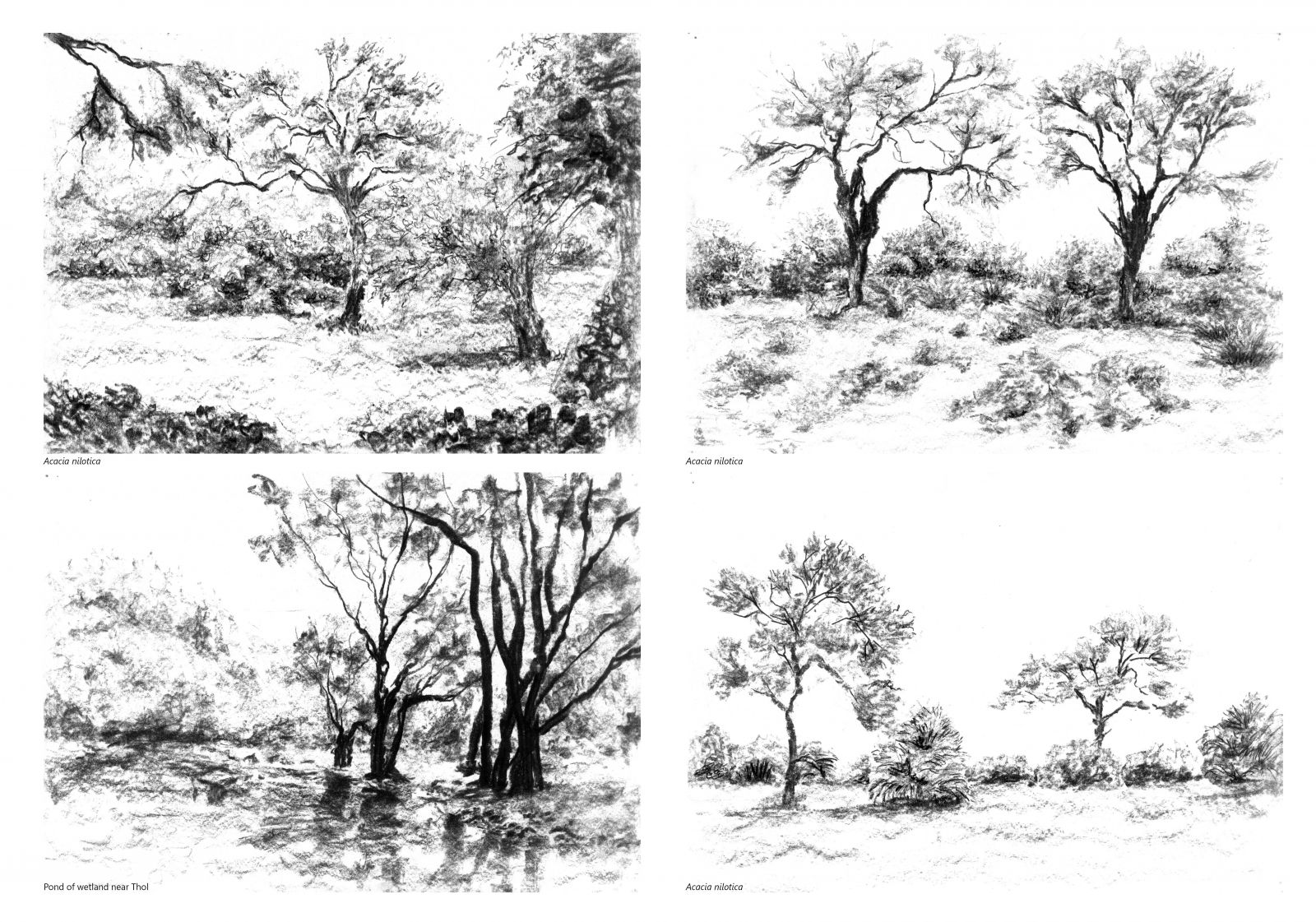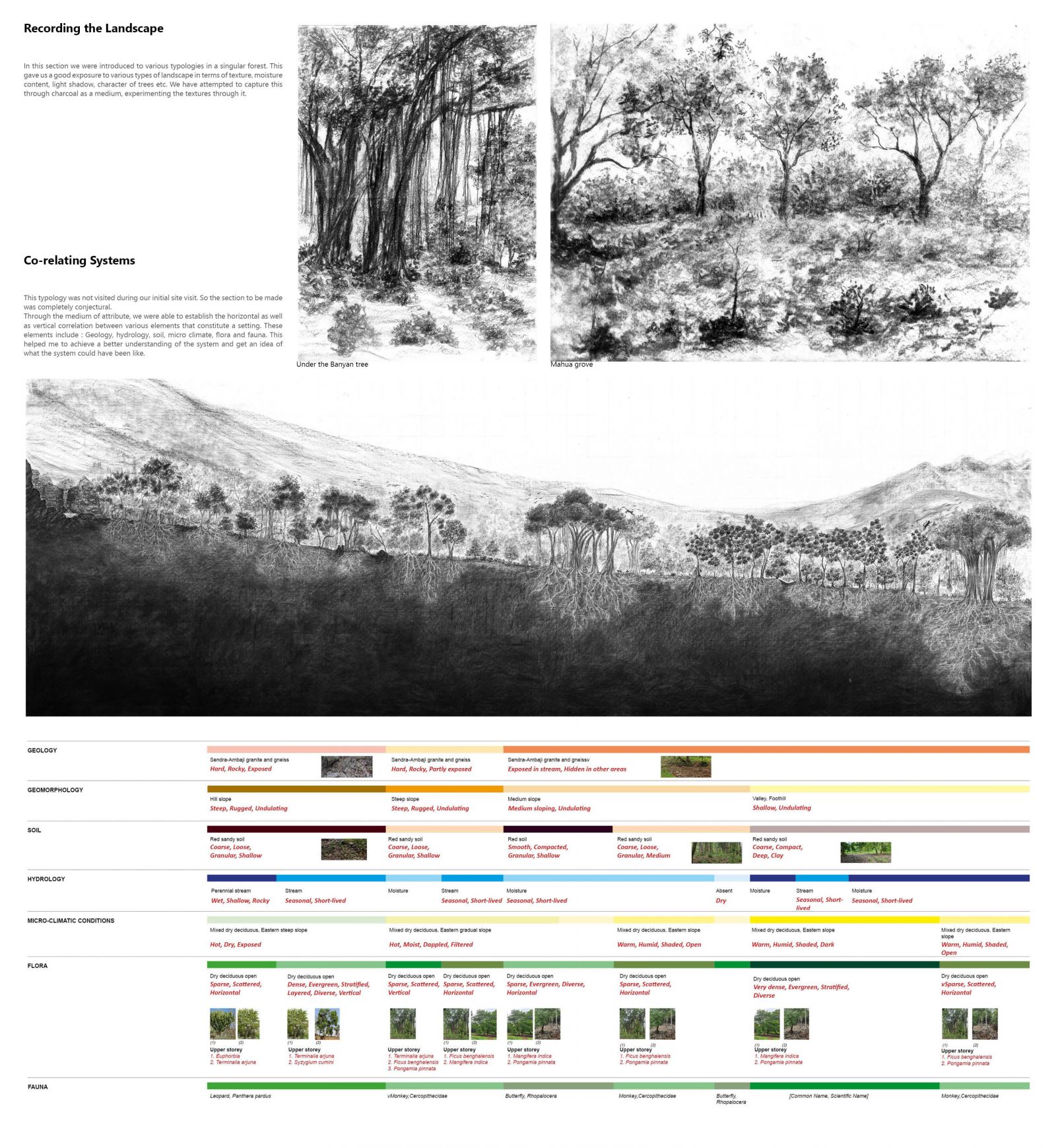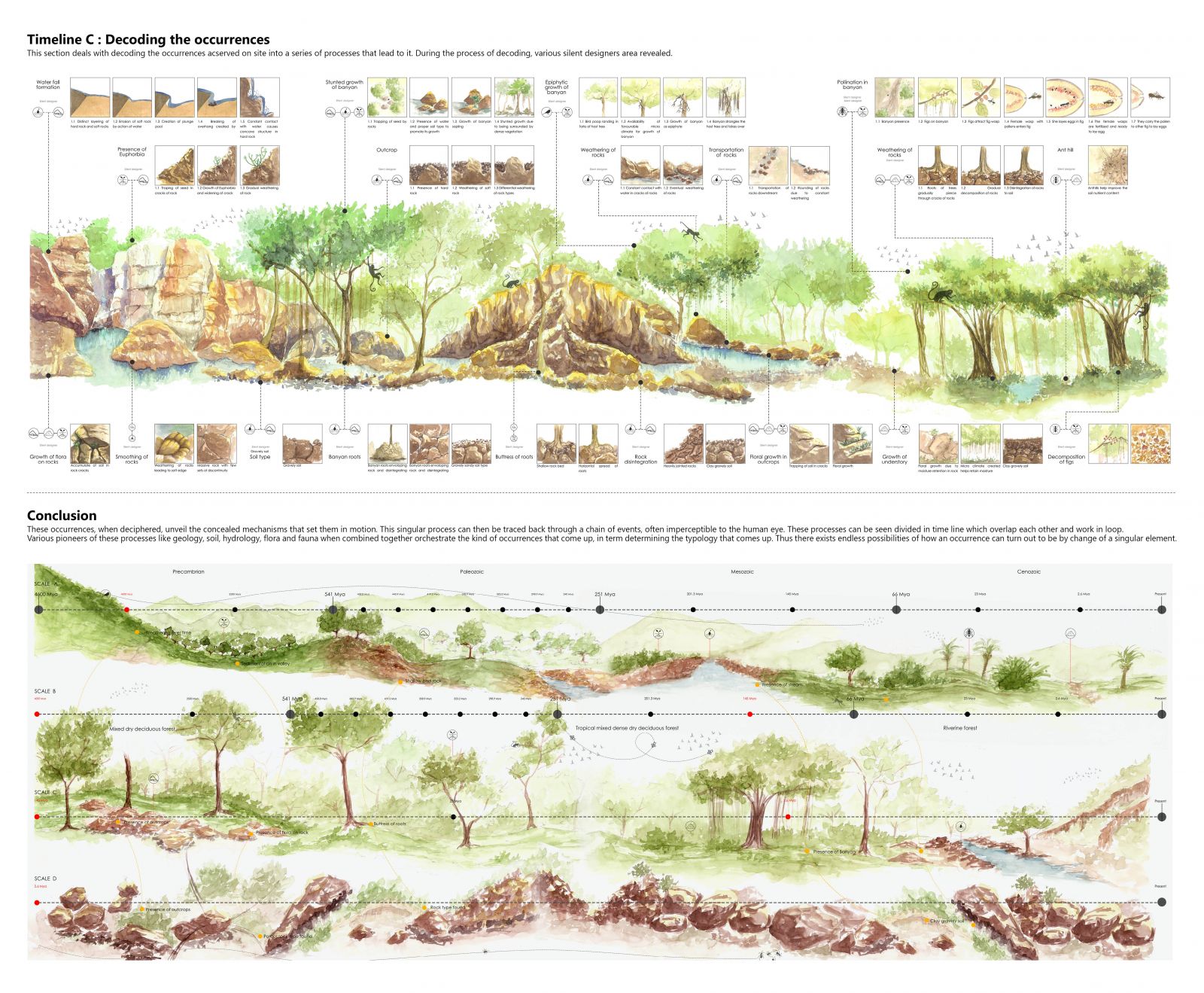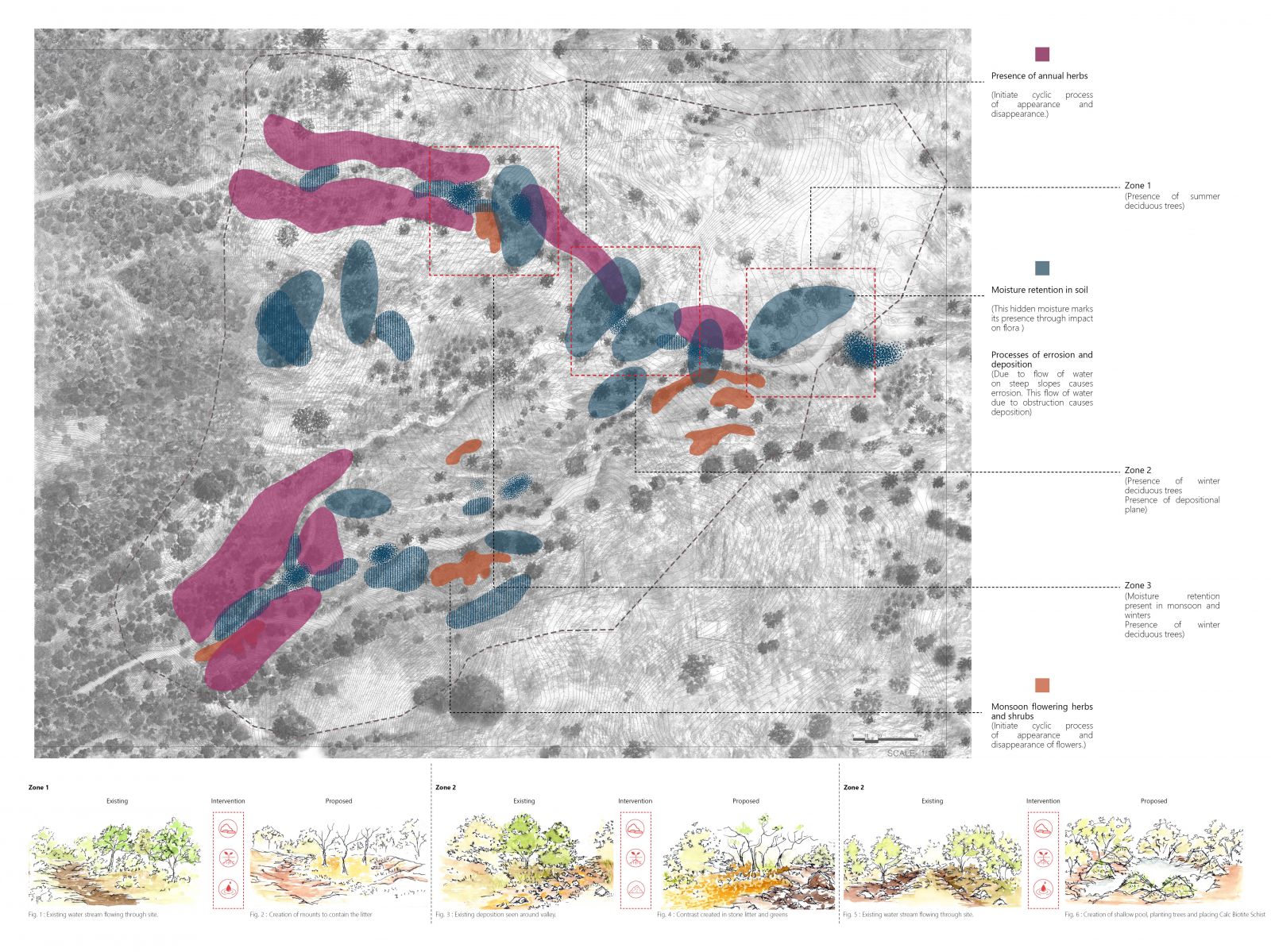Your browser is out-of-date!
For a richer surfing experience on our website, please update your browser. Update my browser now!
For a richer surfing experience on our website, please update your browser. Update my browser now!
Nature unfolds as a vast and intricate tapestry of processes and interactions, often concealed from the casual observer’s eye. While we can stand in awe of the beauty of a forest, the tranquil flow of a river, or the towering majesty of a mountain range, it is the unseen mechanisms at work within these ecosystems that underpin life on Earth. These hidden processes subtly reveal themselves as clues on the surface: soil type suggesting an underlying process; variation or grouping of flora that thrives in a particular region; types of rocks that done the surface Natural processes that are constantly at work can be broadly categorized into macro and micro scales where each contributes to the making of forest settings. On the macro scale, the gradual formation of the Aravalli mountains, a process spanning millions of years, shapes and reshapes an array of unseen forces intersection with cyclic processes giving rise to an ever changing and dynamic landscape. On the micro scale, the slower processes of rock weathering become apparent. Lichens, the flow of water and the intricate network of tree roots collaborate to wear down solid rock, forming new soil types. This soil type, in turn, serves as an indicator of its parent rock, bearing testimony to the unseen forces that shaped it. This study seeks to decipher these subtle clues, exploring into the hidden processes that orchestrate the transformation of landscapes. These unseen processes are the intricate threads that weave together the tapestry of life on Earth, maintaining a delicate balance. While we may be captivated by the visible beauty of the natural world, it is the Unseen process of nature that truly ensures the continuity of life as we know it. Additional works
View Additional Work